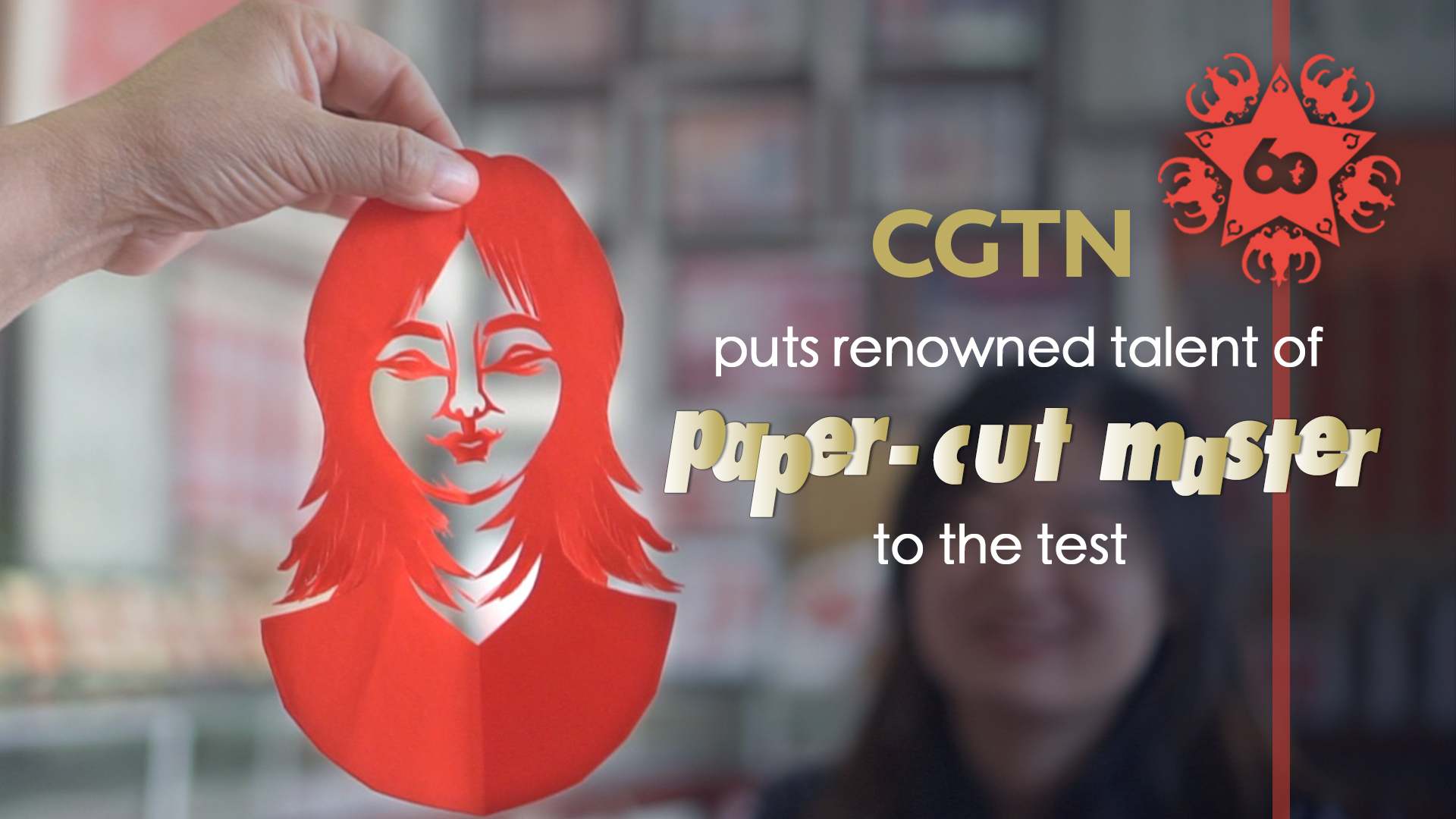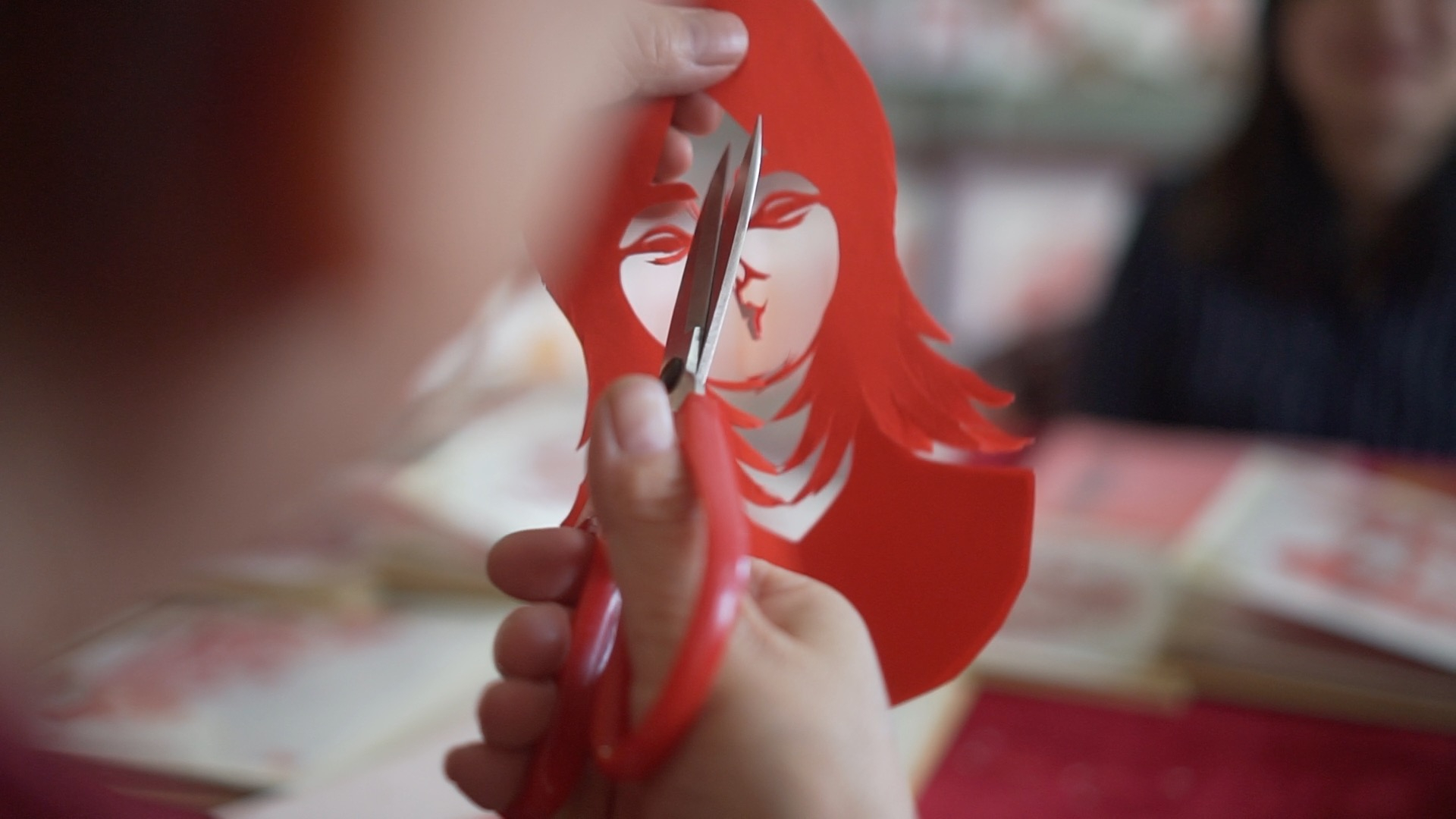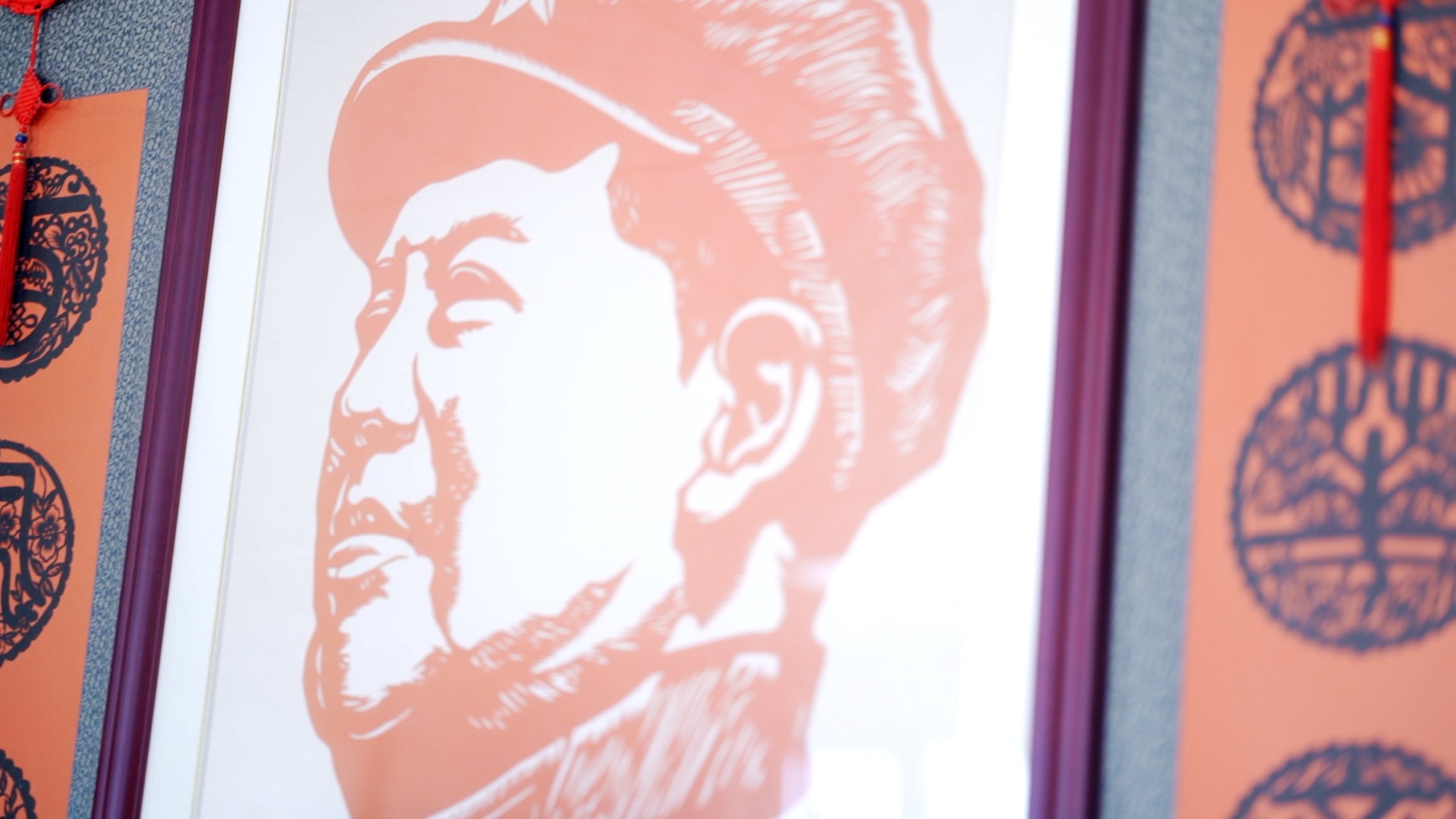
Culture
07:52, 19-Sep-2018
CGTN puts talent of renowned paper-cut master to test
Updated
07:48, 22-Sep-2018
Huang Yichang and Mi Xue
02:15

When you think about Chinese paper-cutting, what comes to mind? Chinese characters? Animals? Flower patterns used as window decorations? Fu Zhao-e is an inheritor of the intangible heritage, and she takes the craft one step further.
Fu is a pioneer of paper-cut portraits, and she can do so in just two minutes. CGTN's digital editors attended her workshop to put her renowned technique to test.
We watched as Fu looked up to study a face for only five seconds before turning to her paper. Her scissors got to work, tiny pieces of paper began to fall like snow, and two minutes later, a vivid paper portrait appeared in front of our eyes. Don't believe it? Check out the video below…

Fu Zhao-e was born in Haojiaji, a small village in Ningxia, and it was there where her fascination with paper-cut began. She recalls her childhood during which she watched with great interest as her mother made paper-cuttings. “Whenever my mum put the scissors down, I would take them and start to cut,” she said.
So far, Fu has created more than 100,000 art works of paper-cut, and has won 57 international and local awards. Many of her works tell the story of Chinese culture, particularly from around her home along the Yellow River. Now 58 years old, Fu still has her paper and scissors close to hand, and is attempting increasingly challenging paper-cuts.

The Ningxia Hui Autonomous Region is celebrating its sixtieth anniversary in 2018. It's also the year in which Fu was bestowed the title of National-level Inheritor of Intangible Cultural Heritage. “I really appreciate the new era we are living in. My mum was cutting paper for nearly her whole life, but didn't have the honor of being titled inheritor,” says Fu. “Now with the title I've been given, I feel my responsibility and obligations, and am keen to hand over our culture to our next generation, especially to the children.”
She also says the next generation of paper cutters shouldn't just use traditional techniques, but also blend modern methods and creativity to help keep this traditional craft alive in the future.

SITEMAP
Copyright © 2018 CGTN. Beijing ICP prepared NO.16065310-3
Copyright © 2018 CGTN. Beijing ICP prepared NO.16065310-3